The Importance of Waterproofing Membranes from ACO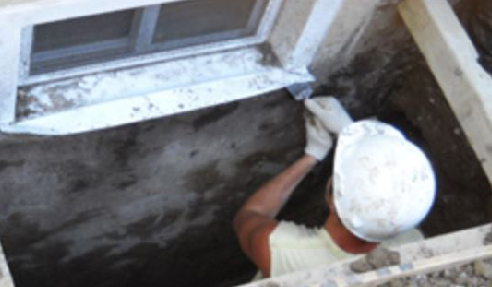 ACO shows how important waterproofing and waterproof membranes are and how specially designed, compact, drainage systems can assist. Waterproofing is a fundamental requirement of construction. A building or structure is waterproofed with the use of membranes and coatings to protect the structural integrity. Yet every year, high numbers of households and commercial premises report damages and issues that can be related back to inadequate waterproofing and application. Sometimes a waterproof membrane is omitted from the design completely, but this is not the leading cause behind waterproofing failure. Poor workmanship is the leading cause of waterproofing failures with 90% of all failures being due to negligent or inadequate workmanship. A waterproof membrane is required to protect a floor (particularly if there are rooms beneath) from the liquid which could penetrate it and/or damage it. Therefore floor penetrations such as floor wastes and other fixtures need to be accommodated with extreme care so that the continuity of the waterproofing is not impaired and subsurface drainage (above the membrane) is provided. The application of waterproofing to specially designed drainage systems can drastically improve the integrity of the waterproof membrane into the drainage. 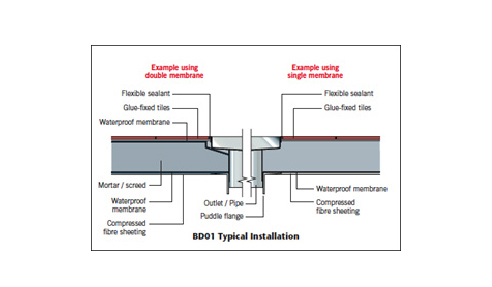 Builders and waterproof contractors are often guilty of not allowing sufficient time for the correct preparation before the application of the waterproofing membrane. This may include the correct installation of:
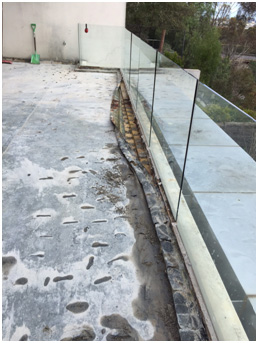 The balcony and the failure of its waterproofing membrane The second leading problem is the failure to prime the respective parts and surfaces before the application of the waterproofing membrane. Poor subsurface drainage and saturation of tiling or topping screeds can result in the failure of the waterproofing bond to substrates. Surface priming for CFC, concrete, mortar screeds and plywood substrates should always be carried out with the manufacturer's specified primers. Surface priming will reduce porosity, dusting, air entrapment (pin holing) and high residual moisture in the substrate, which will cause blistering of the membrane after curing. Another contributor to waterproofing failures is residual moisture in the substrate causing adhesive failure or de-bonding of the membrane. It is critical for both the builders and the waterproofing contractors to test the concrete for mortar screed substrate before the application of waterproofing and installing adequate drainage to drain the waterproof membrane. 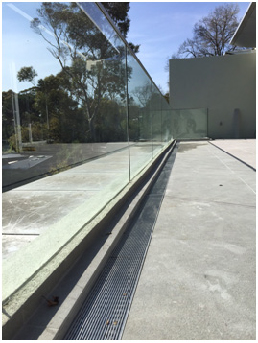 Same balcony with ACO BuildLine's BalconyDrain (BD02) installed ACO has designed two stainless steel product solutions specifically to aid the adhesion of waterproof membranes to improve the quality of the bond: ACO BuildLine's BalconyDrain is one of ACO's speciality products that intercept and collect surface water at thresholds, balconies, green roofs and building façades whilst complying with other building requirements. It comprises two systems:
ACO was recently involved with the reparation and redesign of a failed waterproofing membrane in Victoria. 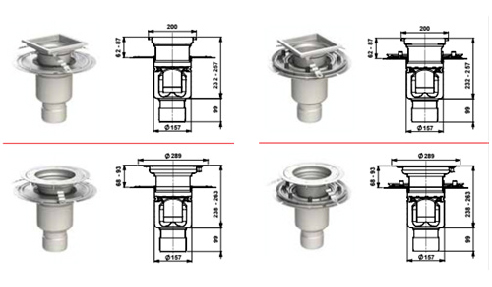 ACO Gully with integrated flange has 2 variations:
Both feature:
For more information, visit www.acogully.com.au.
|
1300 765 226 Emu Plains, NSW, 2750
|


 Sloped Trench Drains for Sports
Sloped Trench Drains for Sports Heelsafe Anti-slip Grates and Covers
Heelsafe Anti-slip Grates and Covers Balcony Drains for Sydney Apartments
Balcony Drains for Sydney Apartments Bridge Stormwater Drainage with
Bridge Stormwater Drainage with Custom Sloped Channel Drainage for Pools
Custom Sloped Channel Drainage for Pools Slip-Resistant Push-Fit Drainage for
Slip-Resistant Push-Fit Drainage for Grease Management and Drainage for
Grease Management and Drainage for Freestyle Architectural Drain Grates -
Freestyle Architectural Drain Grates - Surface Water & Cable Management of Rail
Surface Water & Cable Management of Rail KerbDrain Trench Drain System for Camden
KerbDrain Trench Drain System for Camden Trench Drain Shape and Hydraulic
Trench Drain Shape and Hydraulic Multipart Access Cover Installation
Multipart Access Cover Installation Drainage for Road Infrastructure by ACO
Drainage for Road Infrastructure by ACO Steel Production for Construction Across
Steel Production for Construction Across Surface Drainage for Construction by ACO
Surface Drainage for Construction by ACO Non-Slip Drainage for Public Area from
Non-Slip Drainage for Public Area from Hygienic Grease Management for
Hygienic Grease Management for Grease Management and Drainage System
Grease Management and Drainage System Trench Drains for Transport
Trench Drains for Transport New Trench Drain Technical Handbook by
New Trench Drain Technical Handbook by
